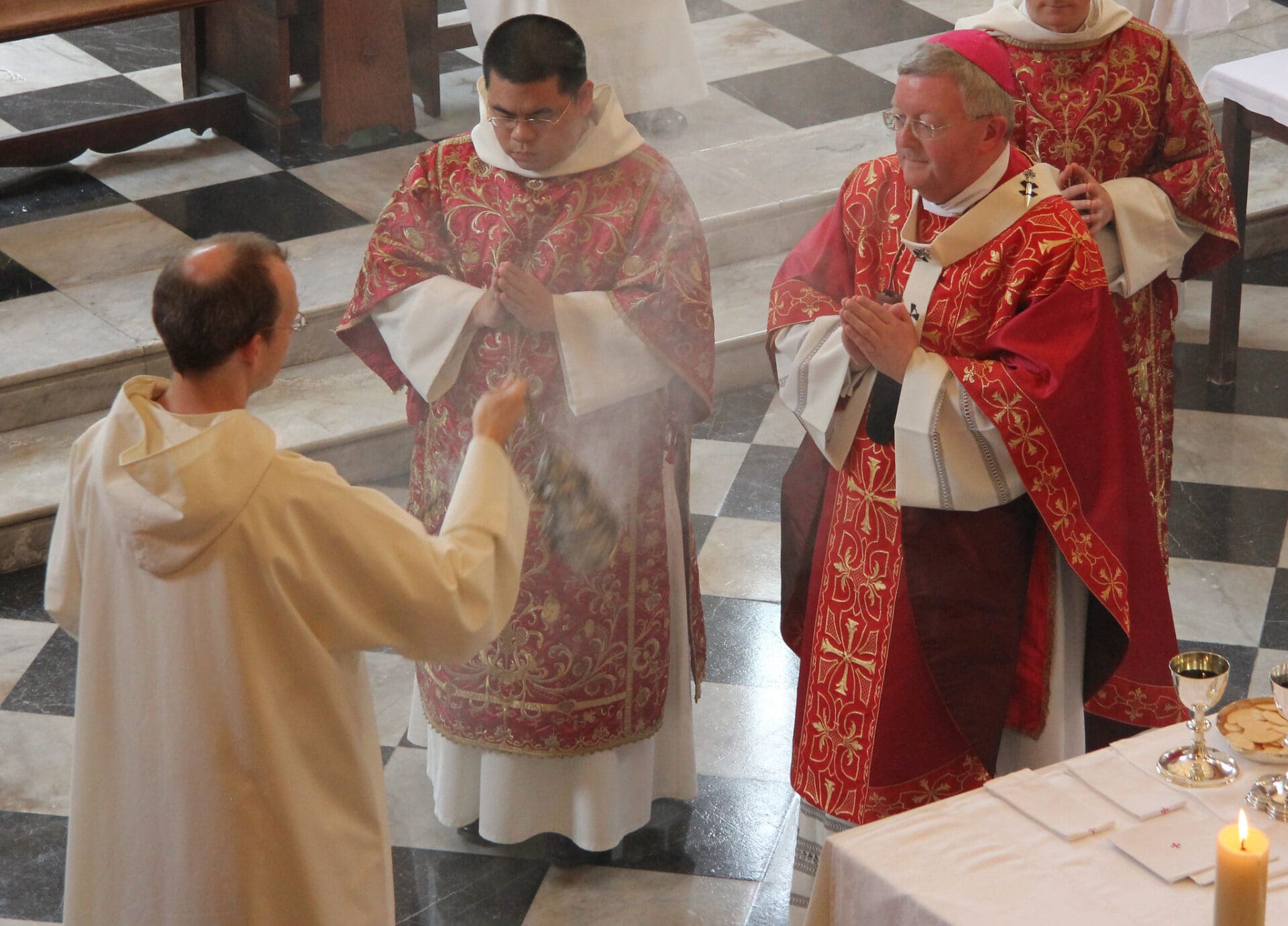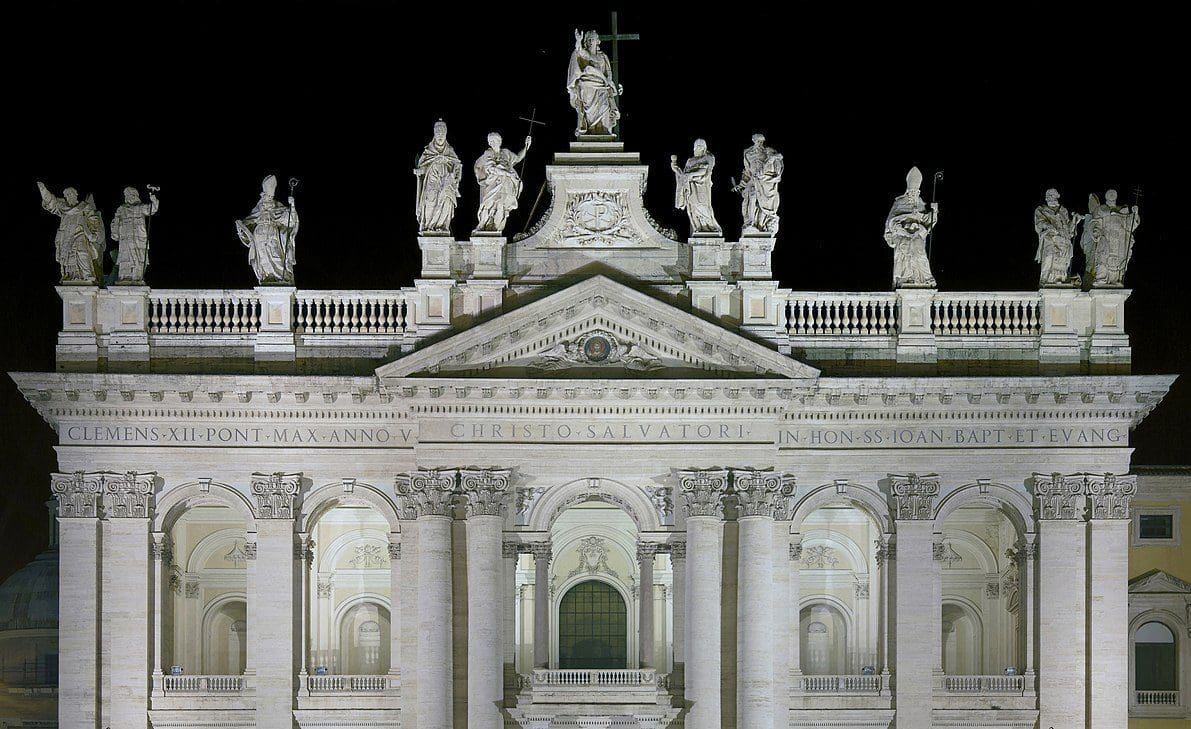It is “fitting [convenit] that every church have bells by which the faithful are invited to divine offices and other religious acts.”[1] Until the promulgation of the new Book of Blessings, church bells were ordinarily consecrated or blessed by the bishop, who, according to the prescribed rites of the Roman Ritual (IX c. 9, n. 11),
washed the bell with blessed water, signed it with the oil of the sick outside, and with chrism inside, and lastly placed under it the thurible with burning incense. He prayed repeatedly that the sound of the bell may avail to summon the faithful, to excite their devotion, to drive away storms, and to terrify evil spirits.[2]
The sacred character of church bells can be discerned by the reservation of their blessing. According to the 1964 document, “Instruction on the Proper Implementation of the Constitution on the Sacred Liturgy” (Inter Oecumenici), any priest is permitted to give the blessings formerly reserved—save those having to do with the consecration of places, including “the blessing of bells for use in a church or an oratory” (55). Indeed, “Church bells may not be used until they have been solemnly consecrated, or at least blessed; thereafter, they should be treated with the care due to sacred objects.”[3] Thus “consecrated, bells became spiritual things,” and therefore could not “be rung without the consent of the ecclesiastical authorities” (cf. 1917 CIC 1169 §3).[4]
It is in this spirit that Terence Sweeney writes in “Ring, Catholic Bells!” of how the deep and glorious sound of the bells in his Philadelphia parish church “remind us…of joy, of loss, and perhaps of more ultimate things.” In this short piece for First Things, Sweeney ponders the spiritual impact of seraphic tones that invite the passersby to pause and listen. Truly, “pausing and hearing can be the first step in faith. ‘Be still and know that I am God,’ the psalmist says.”
The full text of Terence Sweeney’s article can be found here.
[1] Edward N. Peters, The 1917 or Pio-Benedictine Code of Canon Law: In English Translation with Extensive Scholarly Apparatus (San Francisco: Ignatius Press, 2001), 399.
[2] William E. Addis and Thomas Arnold, A Catholic Dictionary (New York: The Catholic Publication Society Co., 1887), 74, alt.
[3] Sacred Congregation for Rites, De Musica Sacra et Sacra Liturgia, §87.
[4] William E. Addis and Thomas Arnold, A Catholic Dictionary (New York: The Catholic Publication Society Co., 1887), 74.



